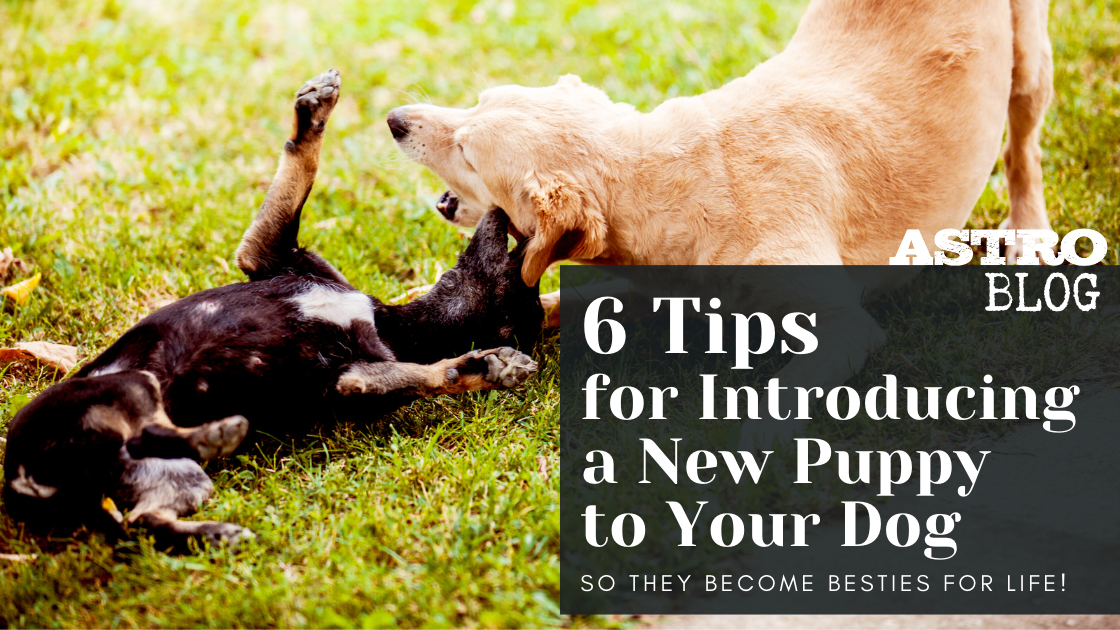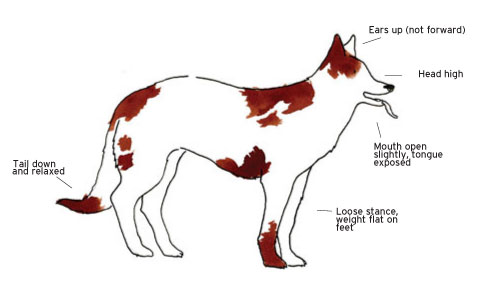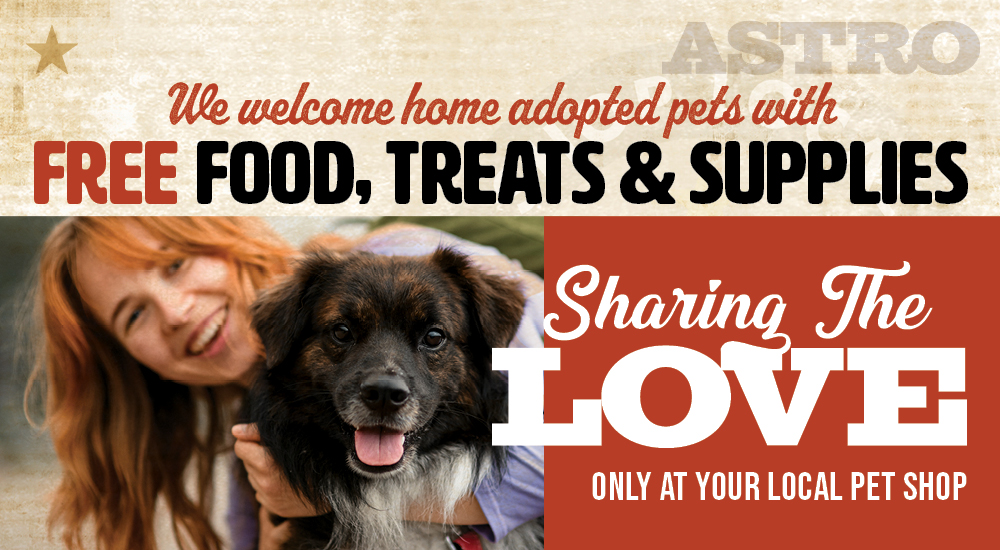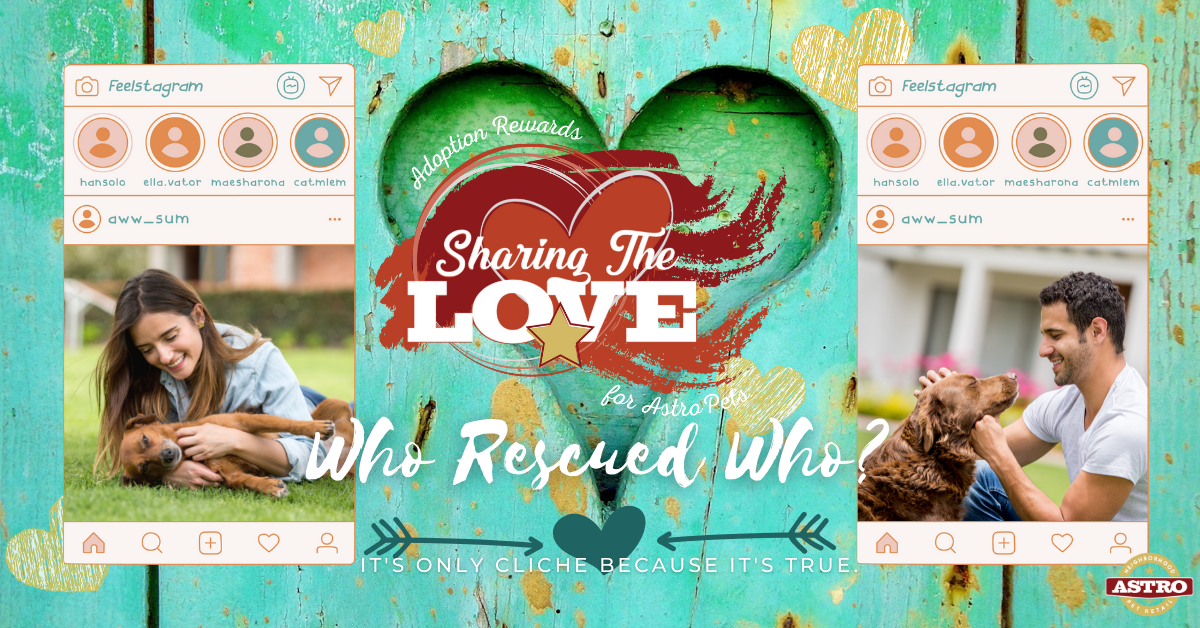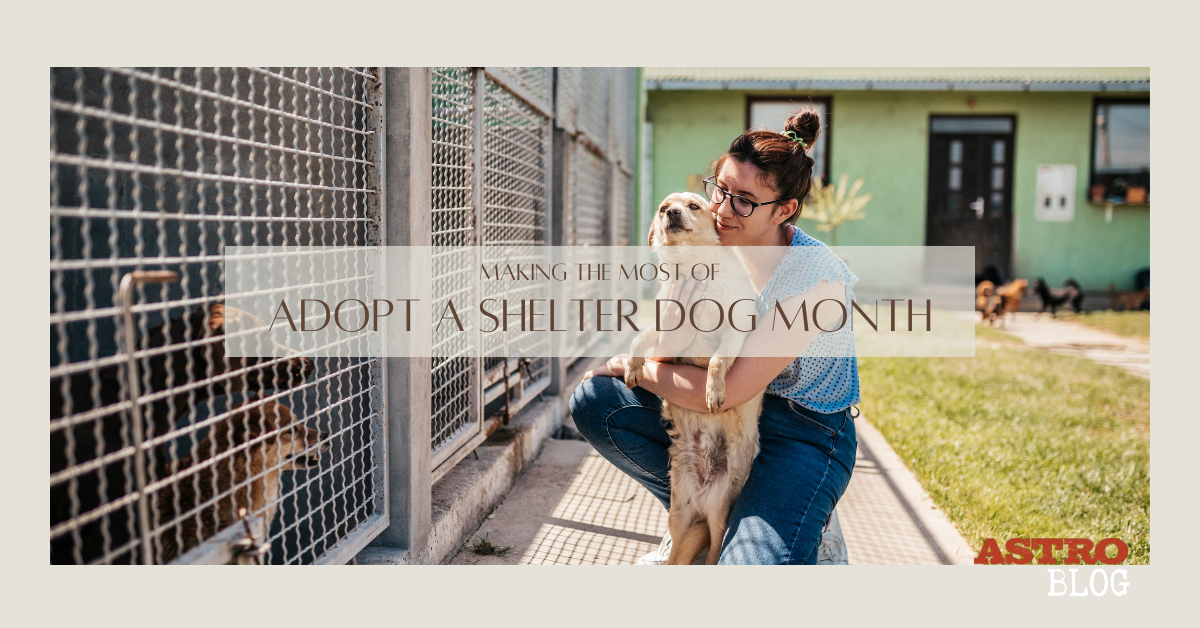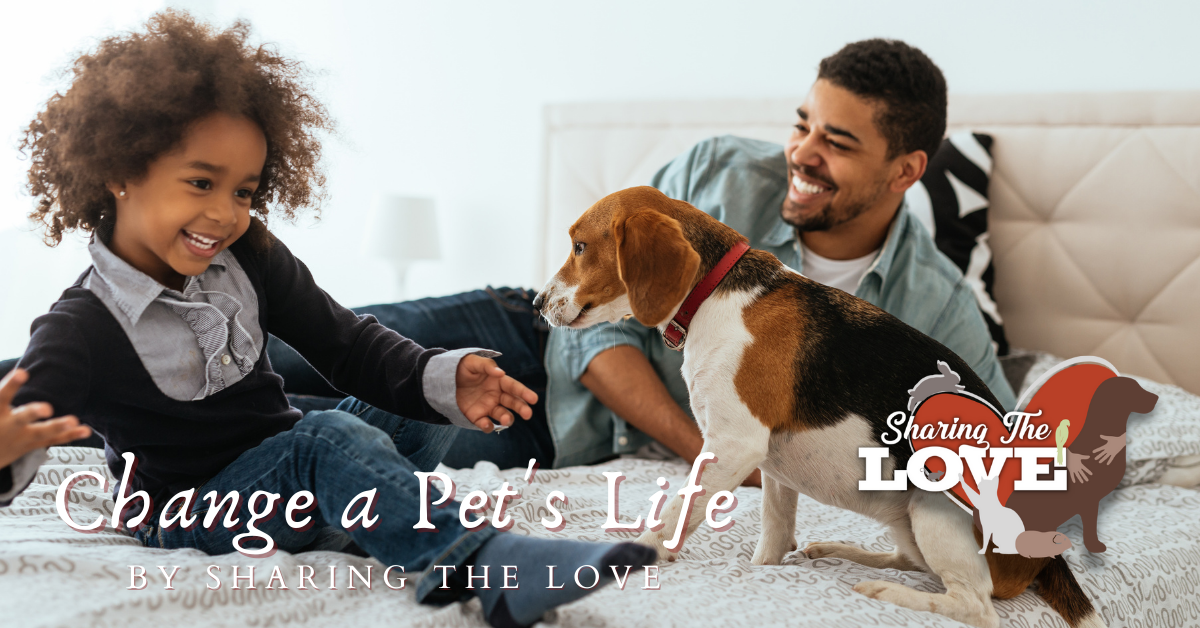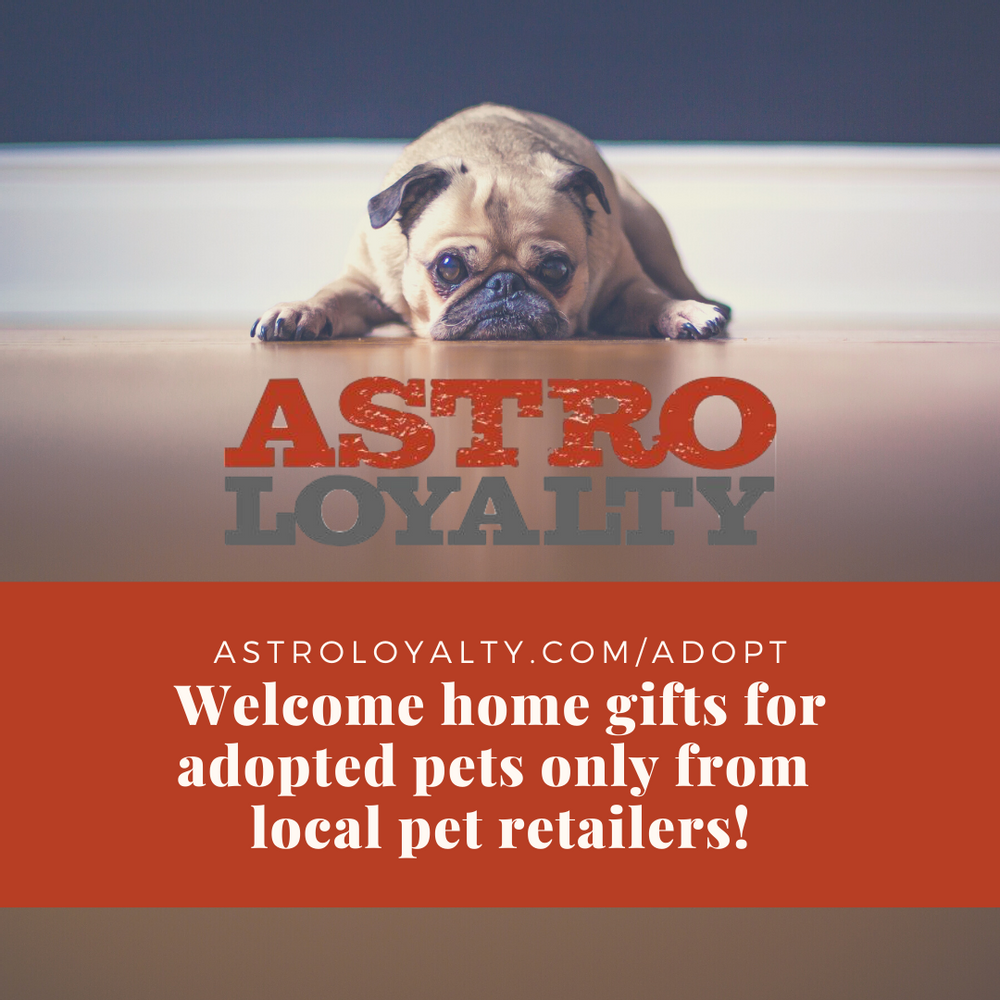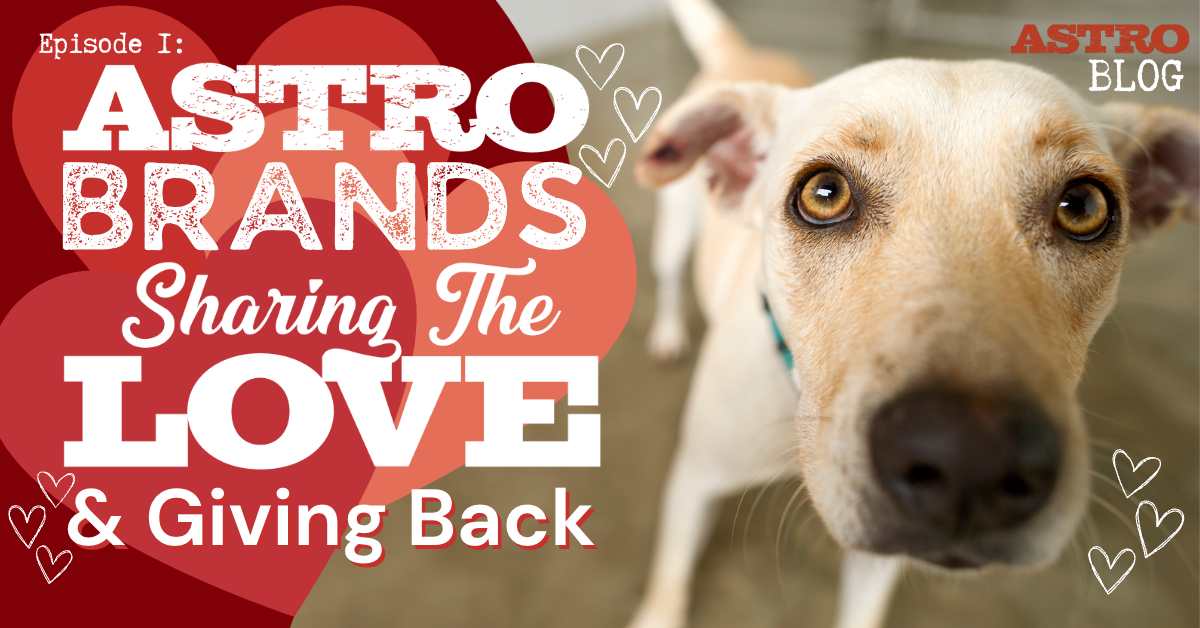Introducing a new puppy to your resident dog can be a daunting experience for any pet owner.
But with proper preparation and patience, you can ensure a smooth transition for both dogs. In this blog, we’ll provide a step-by-step guide on how to introduce a new puppy to your dog. We’ll cover everything you need to know to make the process as stress-free as possible for both your furry friends.
If you’re thinking about adding a new member to your family, keep reading to learn how to introduce your new puppy to your dog.
#1 Create a Separate Area for the Puppy

Your current dog sees your home and their home. Therefore, they may be territorial over it. The same goes for all of their toys, bedding, crate, and special spots. That’s why it’s helpful to start with a separate puppy area.
When you bring your new puppy home, prepare a separate area for them to stay in. Keep this area away from your older dog. This allows them time to adjust to their new surroundings and scents. It also gives them a safe space and begins to set boundaries with your adult dog.
#2 Prepare for the Introduction
Up until this point, your adult dog may have been curious about the puppy area and vice versa. It’s okay for them to smell near each other’s areas before the first meeting.
Once your new puppy has settled in, it’s time to introduce them to your older dog. Ensure both dogs are up to date on their vaccinations and healthy enough for interaction.
Here’s what you’ll need for the big day:
- Invite a friend, partner, or dog trainer to attend the first meeting so each dog has their own human.
- Bring 2 nylon or leather leashes, 4-6ft long. No retractables!
- Carry high-value treats to reward good behavior and create a positive environment. New friend = yummy treat!
Trainer Tip: You may feel like you have a sixth sense when it comes to deciphering how your dog is feeling, but it’s still a good idea to brush up on your dog-body-language translation skills. Knowing how to “read” a dog is invaluable and will help you quickly identify, diffuse or avoid tense situations while keeping your dog safe.
#3 Choose a Neutral Area for their First Meeting

Again, keep in mind how your adult dog may feel about the house. First meetings inside of the house may not always go well, especially if your dog has a history of guardian behavior.
Instead, choose a neutral area, like a park or a backyard- ideally somewhere where you can all go for a walk together, for the first introduction. This will help prevent your older dog from feeling territorial in its own space.
For your puppy, pick a spot where you can start out with an activity like a walk or a one-on-one play session to burn off some of your puppy’s excess energy.
4. Start With A Walk
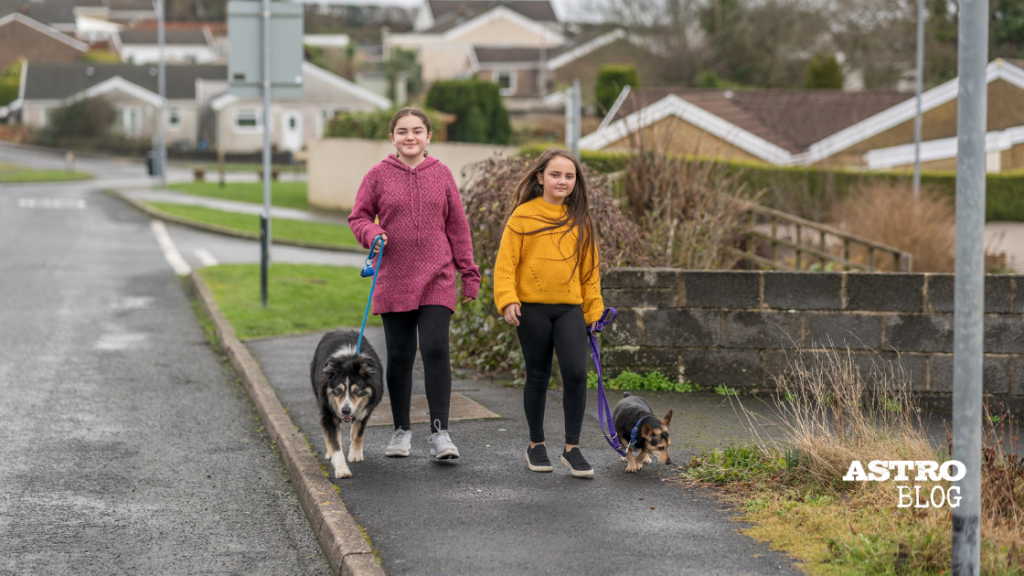
Starting out with a walk where there is some distance between each dog is a great way to get them used to each other’s presence before going in for the big sniff.
Begin by walking your dog parallel to your friend and the new puppy. Keep the leash as loose as possible while still maintaining control, and use a happy and calm voice when speaking. The key is to maintain a positive atmosphere.
When one dog looks at the other, they get a treat. This is to pull their focus away from the other dog and onto their human walking partner. When you are able to hold your dog’s focus, you and your friend can start closing the gap so the dogs are walking closer together.
Continue walking and treating. If the dogs get too excited, add more distance. When they turn their focus back to their human partner, close the gap. Eventually, you should be able to close the gap enough, so you and your human friend are walking beside one another in the center of the group, and the dog and puppy can walk beside their human on the outside of the group. It may take a couple of walks to accomplish this, so be patient.
Once you’re consistently walking together calmly, you can allow the dogs to circle and sniff one another for several seconds before gently guiding them apart. If at any point you sense tension, or their bodies go rigid, guide your dog away and take a break until their body language calms.
Trainer Tip: Some dogs don’t do well with first-time meetings, especially if they are on a leash. If your dog exhibits signs of leash aggression or stress when meeting new dogs, we recommend inviting a dog trainer to oversee your first series of interactions to ensure a safe environment.
#5 Gradual Introductions

Puppies can be a lot for anyone, especially adult dogs that aren’t used to them. Too much time together too quickly isn’t a good idea.
Instead, start with short periods of supervised time together. At first, separate them by baby gates or doors. Add in occasional meetings and walks in a neutral environment, as described in the steps above. As those interactions improve and each dog feels more comfortable, gradually increase their time together.
If any member of the group, human or dog, gets overly stimulated or is starting to feel stressed; it’s totally cool to take a break and reconvene later.
#6 Monitor Their Interactions & Keep Calm

As you introduce the dogs, monitor their interactions closely and intervene if necessary. Even if you must pull the dogs back, remain calm. Panicking will only make the situation worse.
Dogs deeply bond with their human companions and are in tune with our heartbeat and scent in ways we cannot relate to. Researchers found that not only does our heart rate become lower when in the company of dogs – but so too does the canine’s – to the point where both heart rhythms mirror one another. So keep calm, and they will follow suit.
Remember that dogs are social animals. Overall, introducing your new puppy to your family member should be a positive experience for both dogs, but it may take time and persistence. Your puppy and resident dog can become the best of friends if you have patience and care.
Puppy Introduction Tips to Keep in Mind
The steps above are a helpful guide when bringing your new puppy home to another dog. But every puppy and resident dog situation is unique! Consider these additional tips when introducing your new puppy:
- Give both dogs adequate attention alone and together.
- Reward positive behavior.
- Keep a positive attitude; dogs feed off our emotions!
- Be patient; every dog is different. Some need more time than others.
- Later on, work on training the dogs together.
- Give each dog a “safe space” in the home, like their own kennel.
- Help the puppy burn off energy before meeting the adult dog.
Welcome Your Puppy to the Family, & the Neighborhood!
Getting a new puppy is exciting, but it can feel stressful if you already have a dog. The good news is that with enough time and patience, many dogs can cohabitate. Consider the steps and tips above to ensure a smooth transition for your new puppy and adult dog.
At Astro Loyalty, we want all furry friends (and their families) to enjoy happy, healthy lives, which is why we launched our ‘Sharing The Love‘ Pet Adoption Rewards platform. ‘Sharing The Love’ was created to connect newly adopted pets and their families to a valuable support system in their own neighborhood – their local pet supply shop!
It’s simple. When you adopt a pet from a shelter or 501c3 rescue, you can visit a participating ‘Sharing The Love’ retailer in your neighborhood and claim up to SIX full-size free items to start your pet on the path to excellent holistic health. Currently, there are well over a dozen pet health brands contributing to ‘Sharing The Love’, and there are retailers across the USA and Canada supporting pet adoption with their participation. ‘Sharing The Love’ also rewards all types of pet adoptions; dogs, cats, rabbits, hamsters, gerbils, guinea pigs, rats, and chinchillas! As an added bonus, the majority of the brands also gift Bounce Back Coupons to those pet owners who choose their products for their Adoption Bundle. When you add it all up, a single pet owner could claim up to a hundred dollars of free and discounted items – and that’s not even counting the savings they will continue to experience when they sign up for their neighborhood pet shop’s frequent buyer loyalty programs!
Savings aside, the true value of shopping locally lies in the personal attention you and your pet receive, and in the meticulously vetted products, the shop owner chooses to offer their community of customers. When it comes to the health and happiness of your new best friend, it pays to shop local. 🐾


